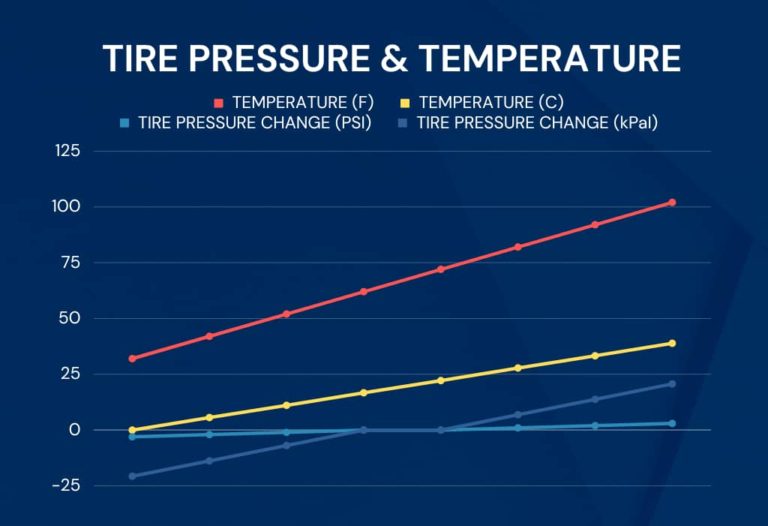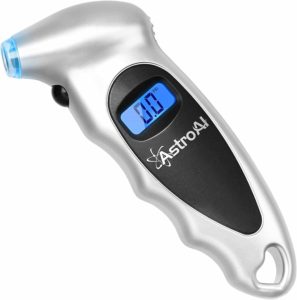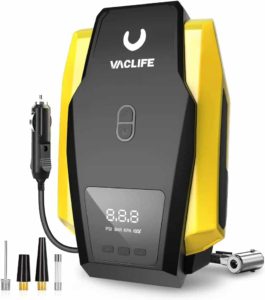Before we jump into the details, it’s important to know that the Kia Telluride doesn’t have a tire pressure reset button. So, ignore any videos or websites that claim otherwise – it simply doesn’t exist. But don’t worry! Just follow the steps in this article, and you’ll be able to turn off your tire pressure light without any issues.
What is the TPMS in a Kia Telluride?
I know how annoying it is when that yellow exclamation point lights up your dashboard, but it’s important! The tire pressure monitoring system (TPMS) in your Kia Telluride is a vital safety feature that keeps track of your vehicle’s tire health. Its primary function is to maintain an optimal driving experience and protect passengers by alerting the driver to any deviations in tire pressure from the recommended levels. The TPMS helps prevent tire-related issues, allowing you to navigate the road with confidence and assurance, ultimately making your journey more secure and enjoyable.
To check your tire pressure: scroll to the info page on your LCD screen by pressing the mode button on your steering wheel. Or, check the sticker on the driver side door panel. Pay attention to Front and Rear pressures as they may differ.
How Does the Kia Telluride TPMS Work?
Tire sensors: Each tire has a sensor mounted on the end of each valve stem that measures air pressure and temperature.
Wireless transmission: The sensors transmit pressure data wirelessly to the TPMS control unit and ECU/ECM.
Constant monitoring: The TPMS control unit continually analyzes the tire pressure information.
Pressure thresholds: The system compares the measured pressure against Kia’s recommended levels.
Warning activation: If pressure is too low or too high, the TPMS triggers a warning.
Dashboard display: The TPMS warning light, typically a yellow exclamation point, illuminates on the Telluride’s instrument panel LCD.
Auditory alerts: In some instances, an audible alert may accompany the warning light.
Tire identification: The Kia Telluride’s TPMS indicates which specific tire is experiencing a pressure issue.
Regular rechecks: The TPMS continuously reassesses tire pressure while you’re driving.
Manual reset: After addressing the tire pressure discrepancy, you may need to reset the TPMS according to the steps outlined below.
Steps to Reset Kia Telluride Tire Pressure Light
The Kia Telluride does not have a tire pressure reset button.
When the tire pressure light on the dashboard lights up, pull over and check your tire pressure.
Determine which tire is causing the tire pressure light to turn on and adjust the tire pressures accordingly.
Fill your tire to the exact recommended pressures. I cannot emphasize enough, try to be as EXACT as possible.
Drive your Kia Telluride. Drive for a few minutes at speeds over 20 Mph.
If the light doesn’t go off right away, re-check your tire pressure to make sure they are all at the exact pressure you set them to. If they are not at the same pressure, you probably have some sort of tire leak.
If the pressures are at the exact pressure you set them to and the light still won’t go off, over fill your tires.
We recommend filling your problem tire with 45 Psi or about 10 Psi over the recommended pressure. With the tire overfilled, drive the car again. This will turn off the tire light.
Now that the tire light is off, readjust the pressure back to the recommended pressure.
What Happens When Tires are Underinflated?
Decreased fuel efficiency: Underinflated tires increase rolling resistance, making it harder for your engine to move your tires, leading to higher fuel consumption.
Impaired handling: Soft underinflated tires negatively affect vehicle stability, causing less responsive steering and handling.
Longer braking distance: Low tire pressure reduces the contact patch with the road, increasing stopping distances.
Uneven wear: Tires wear unevenly, with more tread wear on the outer edges, shortening their lifespan.
Overheating: Excessive tire flexing generates heat, potentially causing tire failure or blowouts.
Higher risk of puncture: Underinflated tires are more prone to punctures and damage from road hazards.
Reduced load-carrying capacity: Tires cannot support the vehicle’s full weight, which may cause structural damage. This can be dangerous towing or carrying excess weight.
Premature tire replacement: The combination of irregular wear and potential damage necessitates earlier tire replacement.
Increased CO2 emissions: Higher fuel consumption due to underinflation contributes to greater greenhouse gas emissions.
Compromised safety: Generally, underinflated tires adversely impact vehicle performance and safety on the road.
What are Common Causes for the Telluride Tire Light to Turn On?
Natural pressure loss: Tires lose air pressure over time due to temperature changes and permeation.
Punctures or damage: Sharp objects (screws or nails), road debris, or impact can cause tire damage, leading to pressure loss.
Leaky valve stems: Damaged or corroded valve stems will release air, resulting in pressure reduction. This usually happens because the rubber gasket between the valve and sensor goes bad. This can be fixed with a tire pressure repair kit.
Temperature fluctuations: Changes in ambient temperature can cause tire pressure to increase or decrease.
TPMS malfunction: Faulty sensors, dead or dying sensor batteries, or system errors may trigger the tire pressure light erroneously. Sensor batteries last about 5-10 years and are not replaceable.
Recent tire service: Incomplete TPMS reset after tire maintenance or replacement will activate the warning light.
Mismatched tire pressures: Inconsistent tire pressures can cause the TPMS to activate.
Wheel or rim issues: Damaged, corroded, or cracked wheels or rims can lead to air leaks and pressure loss.
Altitude changes: Climbing or descending in elevation can affect tire pressure and trigger the TPMS warning.
Electrical problems or software issues within the car’s TPMS system.
How Does the Weather Affect Your Tire Pressure?
Weather plays a significant role in the tire pressure of your Kia Telluride. As the temperature outside fluctuates, so does the air pressure inside your tires. Generally, during colder weather, the tire pressure decreases, while in warmer conditions, it tends to increase. This is due to the expansion and contraction of the air molecules inside the tires, responding to changes in ambient temperature. It’s essential to keep an eye on your tire pressure during seasonal transitions or sudden weather shifts. The graph shows that for every 10 degree drop in air temperature, your tire pressure will decrease by about 1 Psi.
Conclusion
In conclusion, understanding the Kia Telluride’s TPMS is crucial for maintaining optimal tire health and ensuring a safe driving experience. Keep an eye on your tire pressure, and remember, there’s no reset button! Follow the steps in this article, and you’ll confidently tackle any tire pressure light situation. Happy driving! Everything in this article is applicable to all Kia Telluride models and trims.
Please note that this blog post contains Amazon affiliate links. This means that if you make a purchase through one of these links, we at TPMSRESET.com may earn a small commission at no extra cost to you. We only recommend products that we personally use and believe in. Thank you for supporting us.




